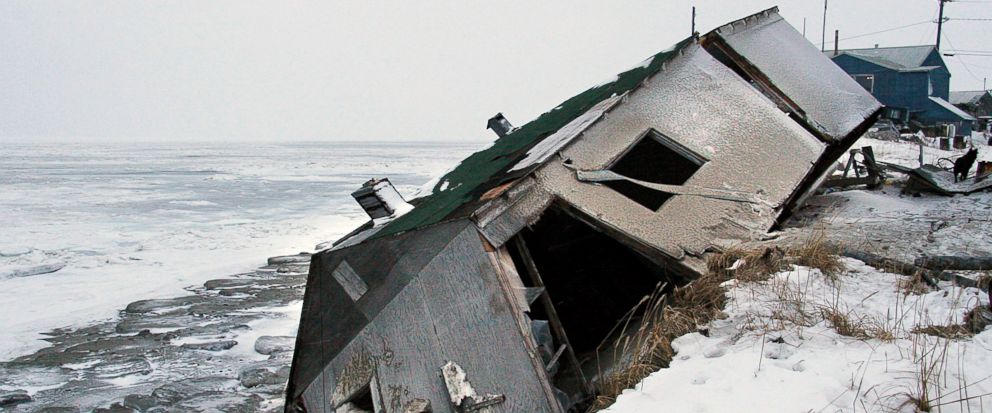Report: Health problems could arise as Alaska warms
Climate change in Alaska has the potential to create serious physical and mental health problems for Alaskans, according to a new report from state health officials.
Melting permafrost that damages infrastructure, increased wildfire smoke, disturbances in the harvest of wild fish, game and plants, and an expanded list of diseases, including tick- or mosquito-borne diseases, are the potential downsides, the Alaska Division of Public Health said.
Climate change's effects on Alaska wildlife have been well documented. Polar bears and their main prey, ringed seals, were declared threatened because sea ice — their primary habitat — is shrinking.
The 77-page report released this week was compiled so Alaskans could monitor anticipated changes affecting people and prepare strategies.
"Our hope is that communities and decision-makers could look through the document, see what applies to their jurisdiction and develop their own assessment of that health impacts may result," health specialist Sarah Yoder said.
Climate change affects Alaska differently than other states. Permafrost — a layer of soil below the surface that stays frozen throughout the year — underlies 80 percent of the state. With proper construction techniques, it provides a stable foundation for buildings, roads and runways, but thawed soil could lead to weakened foundations and accidents, the report said.
Sea ice, along with permafrost, provides crucial protection against coastal erosion when savage winter storms crash in from the Bering, Chukchi and Beaufort seas. However, warming already has thawed soil and eroded coastlines, leading at least three villages, Kivalina, Newtok and Shishmaref, to consider relocating.
The latest National Climate Assessment predicts that by 2050, Alaska's average annual temperatures will be 2 to 4 degrees higher than what they were from 1971 to 1999. By the end of the century, average annual Alaska temperatures are projected to be 4 to 8 degrees higher even with a substantial reduction in emissions, according to the assessment.
The Alaska report warns of "solastalgia," distress from unwanted environmental changes close to a person's home. This distress could occur when there's a change in the abundance or migration patterns of animals a person relies on for food, said Dr. Joe McLaughlin, state epidemiologist.
Climate change already is projected to lengthen the growing seasons, allowing a wider variety of crops to be grown, the report noted. Warmer winter temperatures could lead to fewer exposure injuries and deaths, the report said.
However, lower air quality from additional wildfires, exposure and drowning deaths from falling through thinner river and ocean ice, and contaminants released by thawed permafrost also are possibilities.
The report warns of decreased availability of local foods. Residents of Kivalina, a village on Alaska's northwest coast, saw decreases in Arctic char, a preferred food, after thawing led to slumps of riverbanks and additional sediment in the Wulik River. Other studies have documented rising temperatures and the failure of underground ice cellars, used for food storage in northern coastal villages, leading to food spoilage, decreased food security and a higher likelihood of food illnesses.
Climate warming could open Alaska to diseases, not normally seen, the report warned, as previously unseen pathogens and their hosts thrive in the absence of colder temperatures, the report said.
For example, Alaska has never documented locally acquired cases of Lyme disease. The state does not have climate conditions favorable to the ticks that spread the disease. But climate models indicate that could change, the report said.
West Nile Virus, seen in 48 states and transmitted when mosquitoes feed on infected birds, thrives in temperatures that reach 86 degrees over a 10-day period. Summer temperature in Alaska's interior already exceed 80 for several days annually and likely will climb for a longer duration later in the century, the report said.
- Star
Add Interests Customize your news feed by choosing the topics that interest you.
To save your interests across all devices Log In or Sign Up »Source – abcnews.go.com






